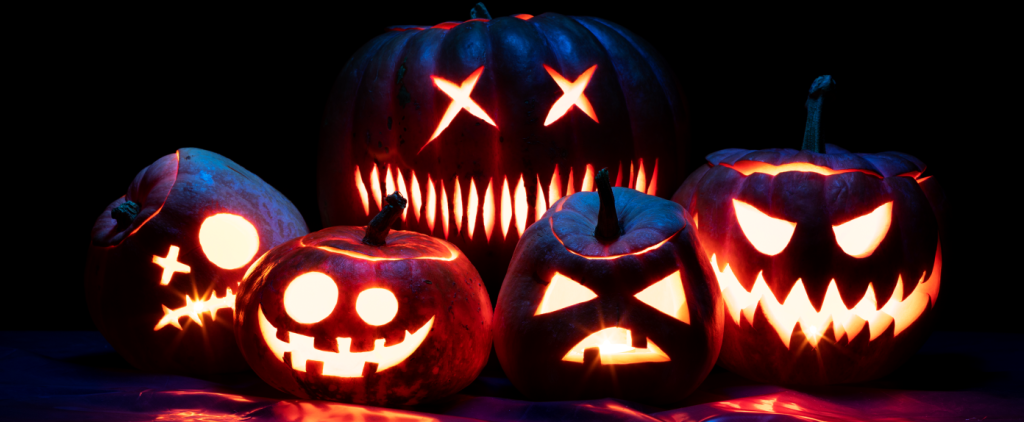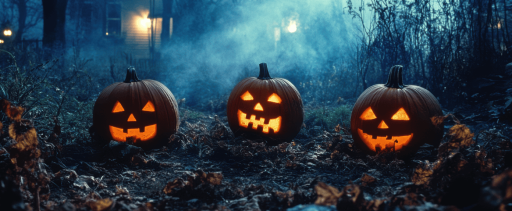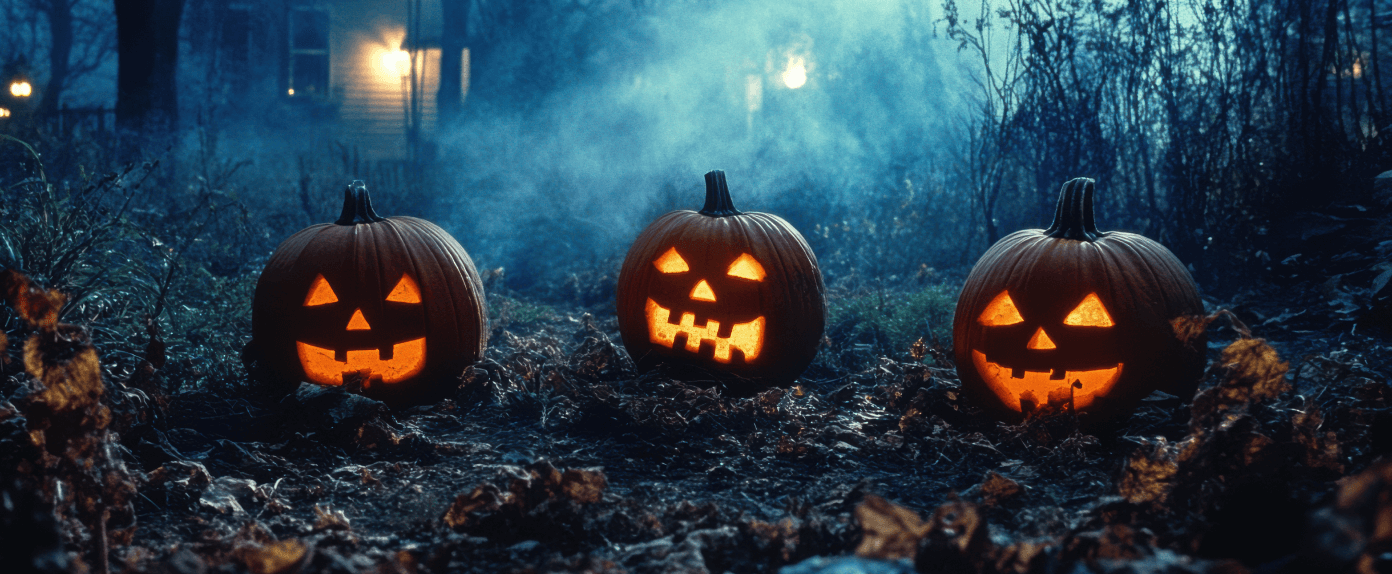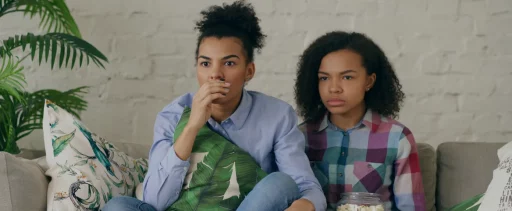Halloween, at its core, is less a festival of fright than a rehearsal for it, a way for people to confront darkness on their own terms. As researcher A. J. Worrall notes in The Significance of Halloween in Literature and Film (University of Chester, 2016), “Halloween allows whomever celebrates it to familiarize themselves with darkness, death, and fear”. Across literature, stories, and cinema, that familiarity has evolved into something almost comforting: horror as a safe, shared ritual.
Let’s explore what makes Halloween such a powerful theme in film and media, and why filmmakers, both indie and renowned, keep returning to it.
What Is the Significance of Halloween?
From Ray Bradbury’s 1972 novel, The Halloween Tree, to modern high-budget horror movies, the season’s most iconic stories understand this paradox. They are about fear, yet they invite it, fulfilling genre expectations and allowing us to enjoy the grotesque through imagination and routine. Every October, audiences return not to be terrified, but to remember what it feels like to be safely unsettled.
That sense of comfort distinguishes Halloween from pure horror. The ritual itself—the masks, the games, the repetition—becomes a form of emotional control, a yearly opportunity to play with chaos before returning to order. Much of what we think of as its history is really a collage of stories and symbols, and myth, not fact, keeps the ritual alive.
That sense of creative reinvention is what Ray Bradbury captured so well in The Halloween Tree. His young characters drift through different eras, like ancient Egypt, Ireland, Mexico, meeting ghostly versions of the past. It’s not history as a lesson, but history as a dream, something reshaped to help us make sense of who we are now.
Film took that same instinct and ran with it. On screen, Halloween replays how memory feels rather than how it happened. The stillness, the silence, the sense of being watched, all of it works on a level beyond logic. In a way, Halloween movies do exactly what the holiday itself was made for: they blur lines between past and present, fear and fascination, ritual and play.
The Cultural Roots of Halloween
Every culture has its own way of looking at death, but Halloween stands apart because it has learned to make peace with it.
Historically, Halloween has always been a shapeshifter. Long before the costumes and candy, it began as Samhain, the ancient Celtic harvest festival marking the end of summer and the start of winter. It was believed that on this night, the boundary between the living and the dead grew thin. Fires were lit, disguises worn, and offerings left for wandering spirits. Life and death were part of the same cycle.
Centuries later, the Catholic Church reinterpreted these customs through All Saints’ Day and All Souls’ Day, transforming pagan rituals into Christian observance. A. J. Worrall explains, “The Church adopted the attitude that all those festive rites which could not be removed would instead be re-appropriated”.
Halloween as a Cultural Shape-Shifter
By the nineteenth century, Halloween had crossed the Atlantic and reinvented itself once more. Irish and Scottish immigrants brought old traditions to the United States, where the celebration became less about spirits and more about sociability.
All Hallows’ Eve was “viewed as a holiday of welcome cultural import… an attempt to imitate middle-class English gentility”). Games, parlor gatherings, and pumpkin carving replaced bonfires and sacrifice.
But this transformation didn’t erase Halloween’s meaning. The modern Halloween that took shape in America turned superstition into creativity, giving rise to the symbols that now define it: masks, lanterns, and the comforting thrill of the macabre.
The Ancient Ritual of Facing Fear
Long before horror films existed, ancient festivals like Samhain gave people a way to confront the unknown within a shared, protected space. What began as a ritual marking the blurred boundary between the living and the dead has, in many ways, evolved into the language of modern horror cinema.
Film scholar Katalin Kalmár draws a striking connection between those early rituals and John Carpenter’s Halloween (1978). In her analysis, the film breaks the usual distance between viewer and screen: instead of watching safely from the outside, audiences are pulled inside the killer’s perspective. The result feels less like observation and more like participation.
This shift transforms fear into a kind of ceremony. Halloween doesn’t just show danger; it invites us to feel it. Like the ancient rituals it echoes, the film becomes a controlled encounter with chaos — a reminder that facing fear together, even through fiction, is one of humanity’s oldest traditions.
Meaninglessness as Modern Myth
Unlike traditional morality tales, Halloween stories rarely offer tidy motives or moral lessons. As film historian David Rockoff once noted about the archetype of mindless evil, the kind that “simply does what it does”, horror’s real message lies in that absence of reason. There’s no grand plan or redemption arc, just the reminder that chaos doesn’t always need an explanation.
That’s part of what makes modern horror so compelling. In a world obsessed with finding meaning, these stories let us sit with uncertainty. Fear becomes something we share and ritualize not to solve it, but to understand ourselves through it. Like the old harvest festivals that celebrated life and death in the same breath, today’s tales of unease transform the unknown into imagination.

Why Halloween Still Inspires Us Today
Halloween may have started as a ritual about survival, but in today’s movies, it’s become a ritual of imagination. What once played out around bonfires now unfolds on screen, which is a space where we tell stories to manage fear and remind ourselves that darkness can also be fun.
Over time, the holiday has traded strict history for feeling for the spark that keeps audiences coming back to the same shadows every October. Cultural historian Lisa Morton describes Halloween as a kind of creative industry built on reinvention, where films, books, and art keep reshaping the same familiar symbols into new stories (Trick or Treat: A History of Halloween, 2012). She notes that this cycle of reinvention works because Halloween permits people to explore fear safely inside the bounds of imagination, art, and play.
How Stories Shape Our Fears and Fantasies
Storytelling has always been Halloween’s real magic trick.
In Ray Bradbury’s The Halloween Tree, the children’s trip through ancient tombs, Celtic fields, and candlelit cemeteries isn’t just a journey through history — it’s a journey through imagination. When Mr. Moundshroud asks why they wear their masks, he’s really asking them to remember why the ritual exists in the first place.
Every filmmaker since has taken that same idea and remixed it for a new era. Each story reshapes Halloween to fit its emotional moment. The masks and monsters change, but the themes stay constant: mortality, memory, and that uneasy step between childhood and everything that comes after.
Monsters, Masks, and Modern Identity
The monster has always been at the heart of Halloween. Film scholar Harry M. Benshoff, in Monsters in the Closet (1997), suggests that modern horror doesn’t simply show us monsters; it questions what separates the “self” from the “other.”
The mask we put on gives us a chance to experiment with identity, to see ourselves in another form. The monster, too, often says more about us than about evil itself. It’s a reflection of the emotions we rarely name, like loss, guilt, desire, or defiance. Halloween gives those feelings room to breathe, turning fear into something recognizably human.
The Suburban Monster
As Halloween settled into American culture, its monsters moved with it to the well-lit porches from the dark tales. Cultural historian Lisa Morton described this shift as the moment Halloween became “a suburban festival of fear”.
Film critic Anne Lopeland once observed that this transformation made evil feel more ordinary, less about demons, more about human nature itself. The sense that fear can live quietly among us, behind the same doors where we feel safest, keeps the idea of Halloween so compelling.
Masks, Metamorphosis, and the Carnival of Chaos
Halloween has always been a kind of carnival. Philosopher Mikhail Bakhtin described carnival as a time when “ordinary order” is suspended, and people can transform, mock, or celebrate the very things they fear (Rabelais and His World, 1965). That spirit lives on today, where masks and costumes turn fear into play and transformation into art.
Bakhtin wrote that the human body is always “in the act of becoming,” constantly changing and remaking itself. Halloween works the same way — it renews old myths through new faces and stories, reshaping the past to fit each generation’s imagination.
Discover The Significance of Halloween with Indie Cinema on UVOtv
Each October 31, Halloween returns in neighborhoods, on screens, and in the collective imagination — to remind us that fear isn’t something to escape, but something to live with. It’s a ritual of facing the dark, telling stories about it, and finding light in the act of looking. Halloween survives because it never promises safety. It simply offers what it always has: a night to look fear in the eye, tell a story about it, and light a candle against the dark.
See more Halloween-themed horror movies or movies in the thriller genre on UVOtv, or sign up to curate your movie lists–it’s free. And if you have movies to show the world, join us as a creator.





